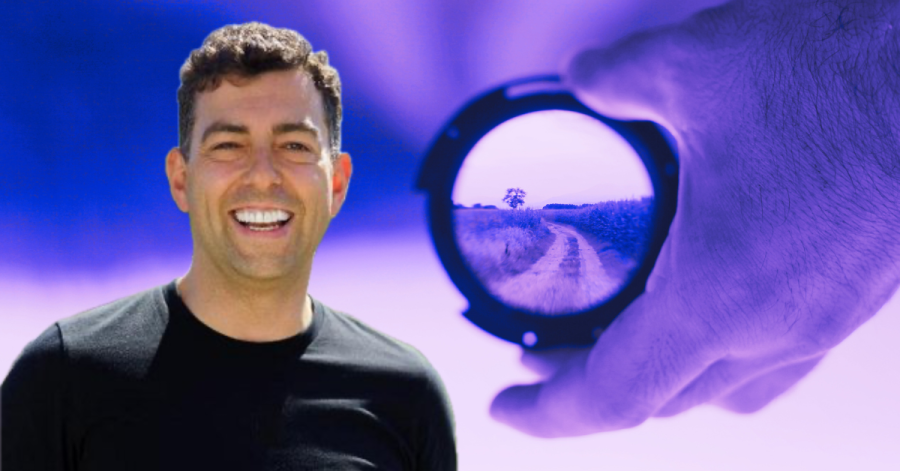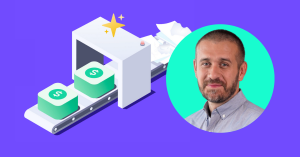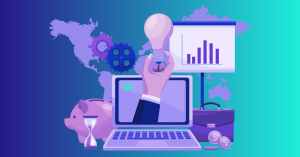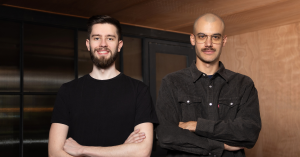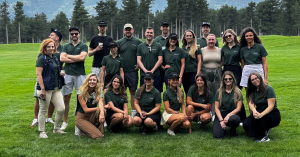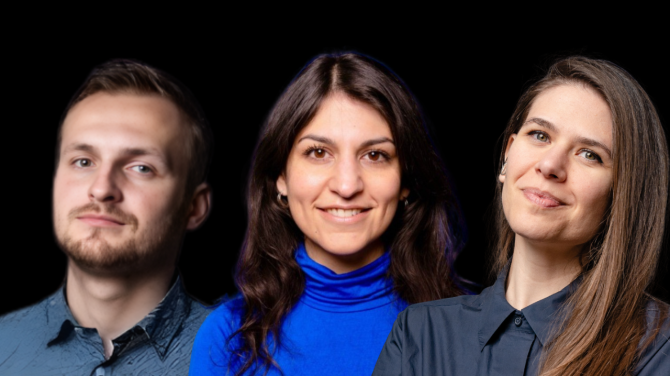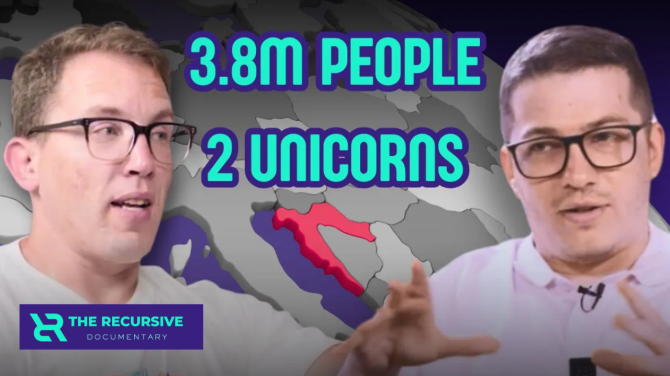Stoyan Kenderov is the founder of Wisdom Inc., a company on a mission to transform the $170B dental industry in the US and beyond. The San Francisco-based startup just announced a $21M funding round to accelerate product innovation and capitalize on its rapid growth, bringing the company’s total investment to $28M (€23.9M).
Stoyan has an impressive history of accelerating growth and achieving profitability across diverse sectors, including dental, fintech, payments, financial services, advertising, and communications. His most recent achievement before Wisdom has been orchestrating a product-led transformation at Plastiq, quadrupling the company’s Gross Transaction Volume to $4B in less than four years. His leadership style is distinctively “full-stack,” with strategic insight, technological expertise, and a relentless commitment to execution.
Before his journey at Plastiq, Stoyan has held senior leadership roles at prestigious global technology corporations such as Intuit, LendingClub, Quicken, Amdocs, and KPN Qwest. His entrepreneurial roots trace back to co-founding one of Germany’s earliest Internet portals and playing instrumental roles in launching Austria’s, the Netherlands’, and Germany’s first Internet service providers.
Because he’s a San Francisco-based Bulgarian, we took the chance to talk about engaging the diaspora, the rise of AI and what it takes to make it into the US market.
How have you decided to start a company in the dental billing industry?
Stoyan Kenderov: For the last 15 years of my career I’ve been helping small businesses adopt technology especially around payment and financial automation. At the beginning of 2023 when we knew we’d be selling my prior startup Plastiq, a payments start-up for small businesses, I got introduced to an investment fund out of New York and started thinking about doing something to help dentists.
Dentistry is a very insular industry that has stayed behind in terms of technology adoption and transformation, far behind healthcare because it is much smaller than healthcare and all the big investments went into healthcare: large hospital systems and clinics implemented a lot of expensive multi-million dollar technology transformation projects, dentistry stayed behind because it’s mostly a small business industry. There are 170k dental offices in the US, maybe 220k dentists in the industry, and 80% of them are privately owned dental offices.
The problem starts right there – in America, most patients that need dental services have to pay partly out of pocket and partly is hopefully covered by their dental insurance. And there are thousands of dental insurance companies who sell packages to employees / companies, which creates a vicious triangle of forces.
The insurance sells to the employer, the employer offers a package to the employee, who then goes to the dental clinic trying to bill the insurance, who says they’re not going to pay. It’s difficult to pinpoint whose fault it is and no one can argue for a better outcome. Doctors usually have to take the losses and write them off, which leads to this industry that produces roughly $170B of dental services a year, and a vicious triangle that leads to 10 to 15% of that not being collected by dental offices. That’s a lot!
If you’re a dental office making roughly $1M a year, and you can’t collect 10-15% of the revenue for services that you’ve already performed that year, you’re going home without a profit that year as a dentist. And you paid yourself a salary, but you also took $500k of dental equipment loans, you have another $500k to pay for dental school, so you’re deeply in debt. Instead of paying off that debt in 10 years, you’ll now pay it until you retire, which is brutal for a service that’s more important than self-driving cars and our trip to Mars. When a tooth hurts, nothing else will matter, you’ll want a doctor who’s focused on providing fantastic dental care. And if the doctor’s worried about paying off expenses, that’s not a good outcome for anybody.
We wanted to alleviate some of the pain in the industry, but also to help the entire dental economy as a whole to reach a new level of performance where insurance still makes the money they need to make, but dentists also get paid and the patients receive the best care. They’re charged before they sit in the chair, and no one’s disappointed.
We started this in 2023 and we chose to do so right now because we think it’s an especially interesting moment. Dentistry lost a huge number of skilled employees who worked in the back office during Covid, when non-essential businesses were being shut down. This talent moved on, and dental offices found themselves without qualified labor, hiring people who can’t file accurate claims, can’t follow up on them and don’t apply the necessary rigor to collect the money properly.
The second reason is that insurances haven’t increased their payoffs in the past years, but the cost of living has increased significantly: syringes, rubber gloves, everything doubled since the pandemic, but the office profits are being squeezed more and more and risk being eaten away. There are surveys by the American Dental Association showing that knowing the current state of affairs most dentists wouldn’t have chosen this profession.
It’s an indispensable industry for us, and we can’t afford to be met with a cold shoulder of an industry that’s only interested in making profit and it can’t be done without investments in technology and making the entire industry easier to be in.
This industry has stayed behind with respect to innovation and technology. Dentists are not digitally savvy, they don’t trust AI, they’ll sit and wait for 10 years until the new generation picks it up. So we created a service using AI and consulting with dental specialists and delivered it to the dentists in a way that they understand and can appreciate and consume, as a service performed by people and machines with an amazing quality.
It’s only been a short time and we’ve already more than doubled the business and we’ve had some great initial recognition with renowned press that compared us to hundreds of other companies in this space and then nominated us as the leader in dental. We ended up winning the award for best dental billing company, so we were very honored to be recognized so quickly.
Another reason why we went into dentistry is that it’s such an archaic market where data is not available for training models. We have access to proprietary data that only the offices we work with have access to. And since it’s patient data, it cannot be opened up on the Internet ever, and we’re operating with a built-in advantage to create a deeply vertical operating system.
It’s an impactful problem to solve. Why hasn’t it been solved effectively yet?
Stoyan Kenderov: There is a systemic difference in dentistry compared to healthcare. In healthcare there was a political will to make patient data portable and to press insurers to automate their operations and to provide data to hospitals and to doctors in an electronic way. There was a bill passed by Congress that compelled the industry to retool and automate, and as a result most of this transition happened 10 years ago, with some of these facilitators even going public.
Big companies were created in healthcare but not in dental, so there are thousands of dental insurance companies doing business across every state, as opposed to the much fewer and more regulated healthcare insurers.
Eventually they’ll be pushed to automate, but today these insurance companies are comfortably sending faxes and letters, knowing that doctors are not going to pursue it and that it’s a logistical nightmare, and that claims can be filed wrong, and time passes, and insurance brokers know that hundreds of millions of dollars will remain uncollected, which earns lots of interest and, on the other side, creates a lot of friction.
What are your next milestones and objectives?
Stoyan Kenderov: We started with revenue cycle management as the immediate issue we’re solving with AI and human experts because it’s the most pressing one. It’s about collecting the money, improving the productivity of a clinic and reducing the stress.
But we have a roadmap with far more ambitious steps, which contains 6-7 products both on the back office side and on the front office side in dental offices. There are problems associated with the pricing of procedures for the patient, and we want to solve that, because with the data set that we’re accumulating we can predict how much the insurance is going to pay and how much the patient needs to cover. Right now it’s a tangled, gut-feeling mechanism with zero transparency, because doctors have no actual data to work on.
This gives us the right to participate in the payments flow, where we want to help patients access expensive procedures by extending credits to them, making sure they can access dental services, and that it’s affordable. We have a holistic roadmap revolving around money, pricing, clients, helping dentists negotiate with insurers. And we want to achieve all of that as fast as possible.
Looking at 5-10 years from now, what needs to have happened for you to say you’ve accomplished everything you wanted?
Stoyan Kenderov: I’d be very content if in 10 years, when the patient comes to the office the doctor and the patient know right then and there what the costs will be and how much the insurance will cover for the best course of treatment.
We also want to make it so that the moment the procedure is performed, a claim is submitted and a payment is made that same day or the next day in full, so all three parties have complete transparency over what happened and there’s no unnecessary friction, and the patient has walked away feeling like this was frictionless and they have received the best treatment possible.
When it comes to the markets you’re addressing, are you planning on staying focused on the US?
Stoyan Kenderov: Yes, we’re focused on the US for now, there are other markets with similar systems where there are two payers for the dental service, but the US market is so huge it’s enough for us to focus on right now, but other countries including Bulgaria have similar systems in place, as I hear from friends of mine who are practicing dentistry in Bulgaria and who’d like to see Wisdom in Bulgaria sooner.
Tell me more about your plans for Bulgaria and what the decision to address this market will ultimately depend on.
Stoyan Kenderov: I have always wanted to have stronger ties to Bulgaria and now it’s a great opportunity to build a part of the engineering organization in Bulgaria. We could compete for talent in other regions like LatAm or India, but those are not places that I carry in my heart.
I’d like to support the ecosystem to develop more skills, to have access to more opportunities, and to learn about more industries. I’d love for us to have an R&D team in Bulgaria.
We currently have an R&D team entirely based in the US, but with more start-ups entering different vertical AI markets we think there’s substantial talent and innovation drive in Bulgaria to be able to build a very strong AI R&D organization. That’s a dream of mine which I’d like to see become reality soon.
It’s delightful to see that Bulgaria is keeping up when it comes to new technologies, especially AI.
From the Silicon Valley perspective, what do you think on the topic of AGI: could it potentially change things?
Stoyan Kenderov: I don’t think we understand consciousness. We don’t understand the universe and consciousness yet to a level to claim that we’re creating artificial general intelligence. So we’re creating artificial traditional intelligence, right? And not general intelligence. I love the aspiration, but I think we’re very far from that, and there’ll be more jobs on that side of the spectrum, once AI takes over most of the mundane jobs. But we first need to understand the essence of human consciousness before we try to replicate it. And we’re nowhere close to that.
We are only now for the first time testing theories about the quantum field nature of consciousness and performing experiments of how you can turn on and off consciousness with anesthesia or psychedelic substances. We understand some effects, but we still don’t know where it lives, what it is or how subjects regain it.
Let’s face it, many of the mundane jobs will be replaced by AI or AGI, but many of the hardcore science jobs that we have come up with applying the scientific method rely on serendipity, on random recombinations of forces and human intuition as well as observation. And I don’t know when AI is going to be able to learn to do that.

